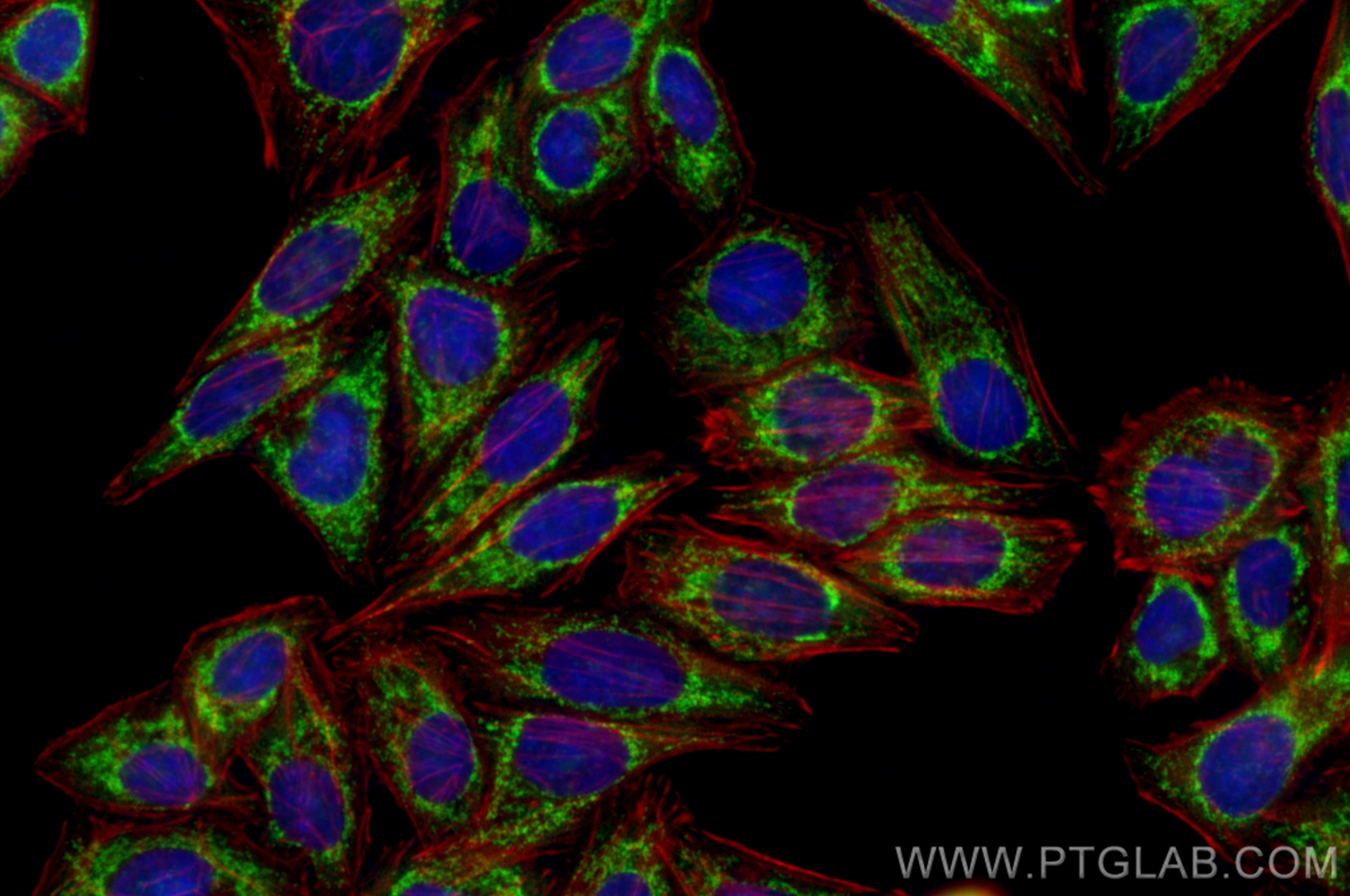Anticorps Recombinant de lapin anti-GPX4
GPX4 Recombinant Antibody for IF/ICC
Hôte / Isotype
Lapin / IgG
Réactivité testée
Humain
Applications
IF/ICC
Conjugaison
CoraLite® Plus 488 Fluorescent Dye
CloneNo.
230168A8
N° de cat : CL488-82949
Synonymes
Galerie de données de validation
Applications testées
| Résultats positifs en IF/ICC | cellules HepG2, |
Dilution recommandée
| Application | Dilution |
|---|---|
| Immunofluorescence (IF)/ICC | IF/ICC : 1:50-1:500 |
| It is recommended that this reagent should be titrated in each testing system to obtain optimal results. | |
| Sample-dependent, check data in validation data gallery | |
Informations sur le produit
CL488-82949 cible GPX4 dans les applications de IF/ICC et montre une réactivité avec des échantillons Humain
| Réactivité | Humain |
| Hôte / Isotype | Lapin / IgG |
| Clonalité | Recombinant |
| Type | Anticorps |
| Immunogène | GPX4 Protéine recombinante Ag5809 |
| Nom complet | glutathione peroxidase 4 (phospholipid hydroperoxidase) |
| Masse moléculaire calculée | 22 kDa |
| Numéro d’acquisition GenBank | BC022071 |
| Symbole du gène | GPX4 |
| Identification du gène (NCBI) | 2879 |
| Conjugaison | CoraLite® Plus 488 Fluorescent Dye |
| Excitation/Emission maxima wavelengths | 493 nm / 522 nm |
| Forme | Liquide |
| Méthode de purification | Purification par protéine A |
| Tampon de stockage | PBS with 50% glycerol, 0.05% Proclin300, 0.5% BSA |
| Conditions de stockage | Stocker à -20 °C. Éviter toute exposition à la lumière. Stable pendant un an après l'expédition. L'aliquotage n'est pas nécessaire pour le stockage à -20oC Les 20ul contiennent 0,1% de BSA. |
Informations générales
GPX4 (Phospholipid hydroperoxide glutathione peroxidase, mitochondrial) protects cells against membrane lipid peroxidation and cell death. Required for normal sperm development and male fertility.It has two isforms about 20KDa and 22KDa, respectively. GPX4 is a monomer,but it has a tendency to form higher mass oligomers (PMID:17630701). It presents primarily in testis.
Protocole
| Product Specific Protocols | |
|---|---|
| IF protocol for CL Plus 488 GPX4 antibody CL488-82949 | Download protocol |
| Standard Protocols | |
|---|---|
| Click here to view our Standard Protocols |


